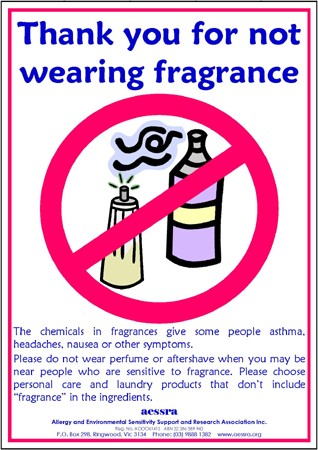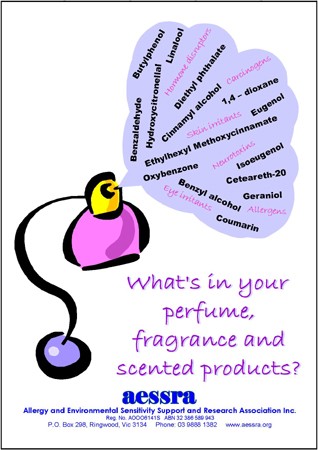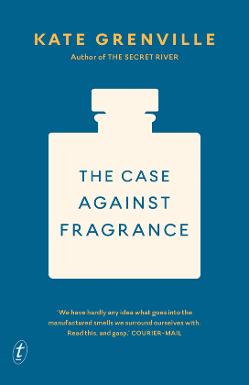Fragrance sensitivity
Some people are allergic or sensitive to one or more fragrance ingredients. Some get symptoms when they use a product containing fragrance. Others also get symptoms when someone around them is wearing fragrance or when there is fragrance in a room from a cleaning product, "air freshener" or other source.
Fragrance is a common cause of asthma, rhinitis (hayfever), sinusitis, eczema, dermatitis, migraine and other types of headaches. It can also cause anaphylaxis (a potentially fatal allergic reaction), epileptic seizures, dizziness, fatigue, poor concentration, nausea and other symptoms. (These symptoms can have other causes - see your doctor for medical advice.)
Most fragrance ingredients are derived from petroleum. Some are known or probable carcinogens (substances that cause cancer), neurotoxins and/or known or suspected hormone disruptors. Many have not had adequate safety testing.
For more information see our fragrance brochures (printed copies are available to people in Australia):
You can download and print pdfs of the following posters:







